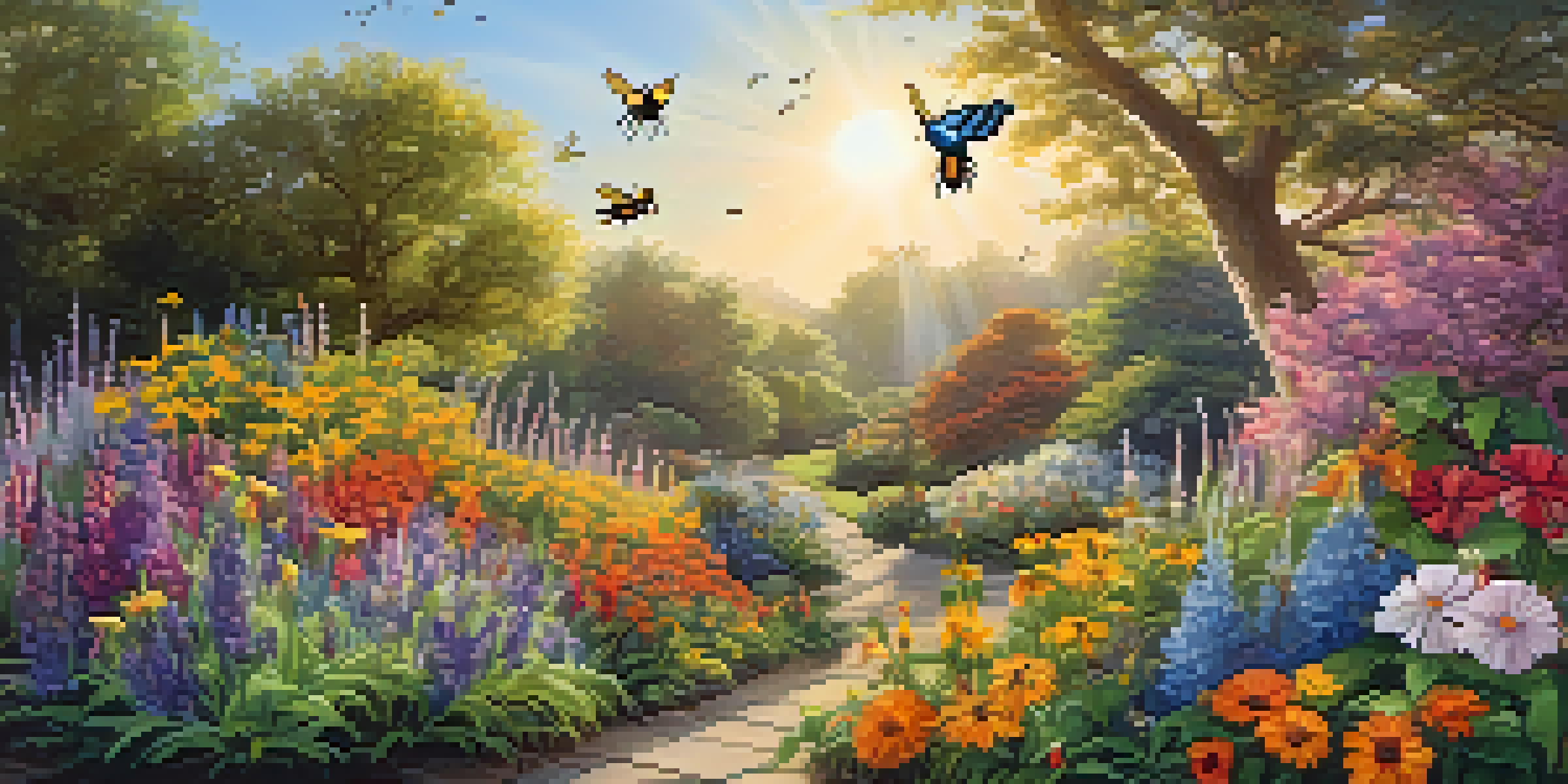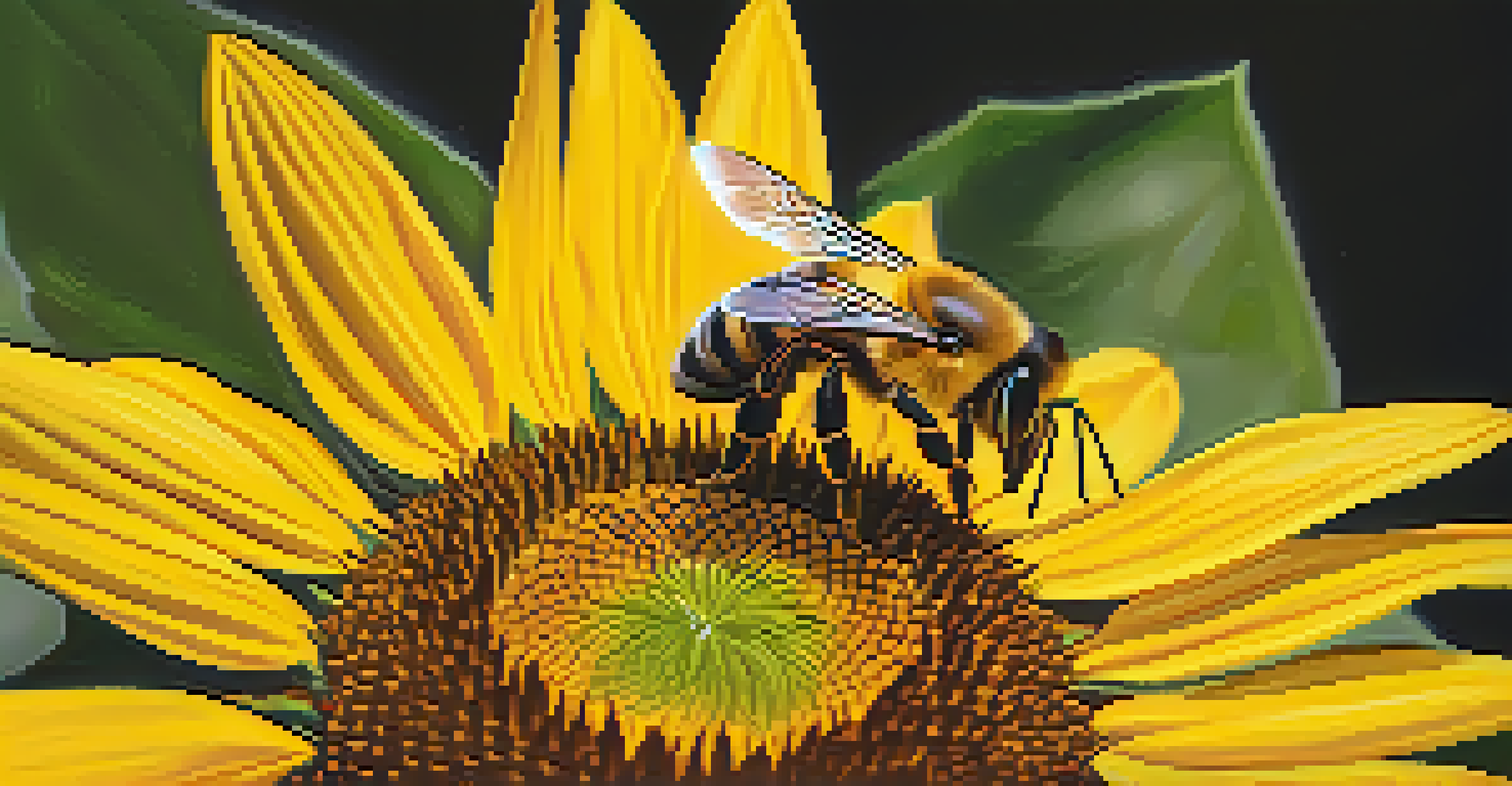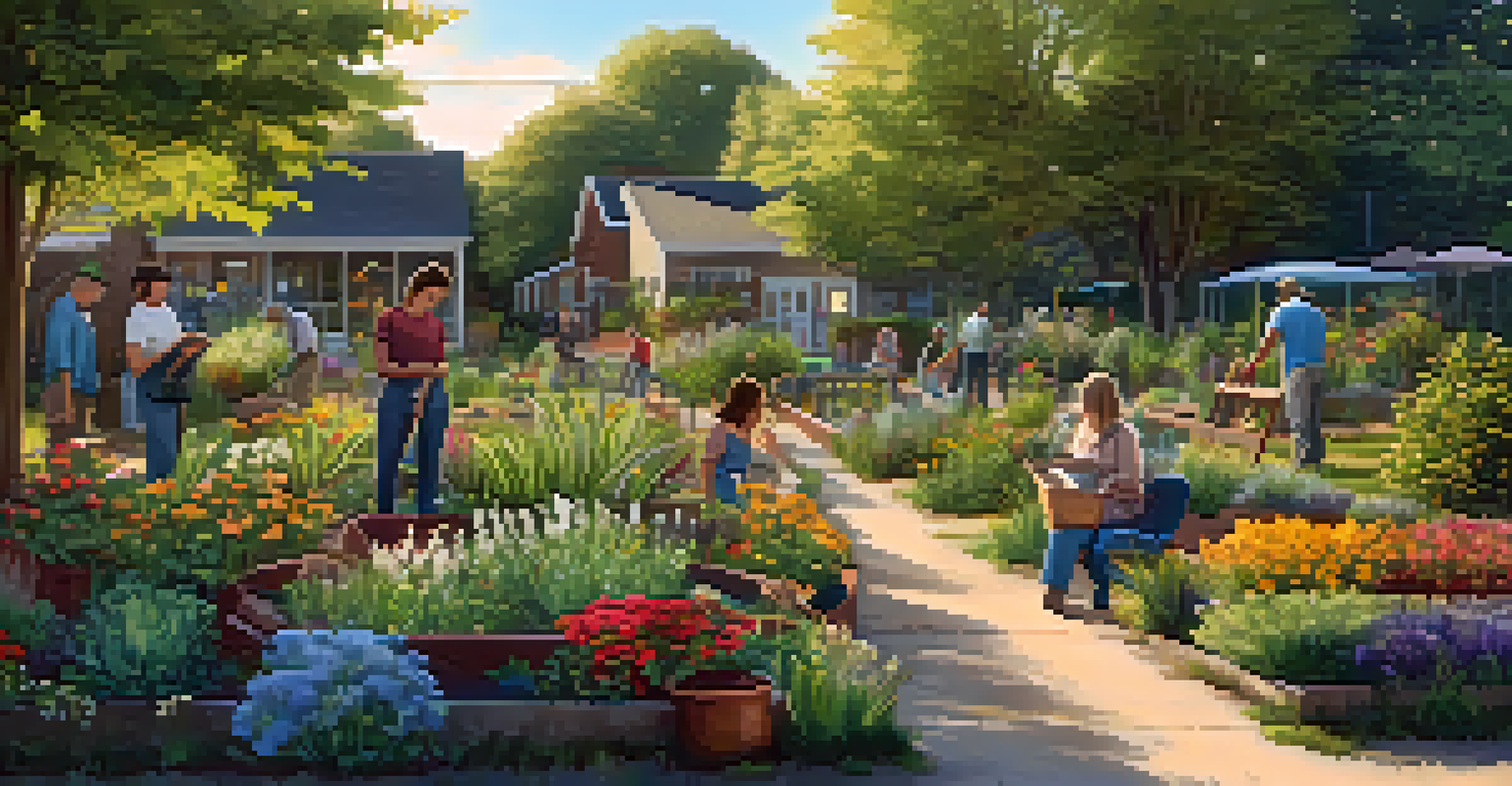The Connection Between Pollinators and Plant Reproduction

What Are Pollinators and Why Are They Important?
Pollinators are creatures that help plants reproduce by transferring pollen from one flower to another. These include bees, butterflies, birds, and even bats, each playing a unique role in the ecosystem. Their importance cannot be overstated; about one-third of the food we consume relies on pollination. Without these industrious animals, many crops and flowering plants would struggle to reproduce.
Pollinators are the engine of our food system, and they deserve our respect and protection.
Imagine a garden filled with vibrant flowers; every bloom relies on visitors to ensure its survival. Pollinators are those enthusiastic visitors, moving from flower to flower, making sure that plants can produce seeds and fruits. This process not only sustains plant life but also supports the entire food chain, from insects to larger mammals and humans alike.
In essence, pollinators are the unsung heroes of our environment. They are essential for maintaining biodiversity and promoting healthy ecosystems. Understanding their role gives us insight into the delicate balance of nature and the importance of protecting these vital creatures.
How Pollination Works: A Simple Overview
Pollination is a fascinating process that begins when pollen grains, which contain male gametes, are transferred to the stigma of a flower. This transfer can occur via wind, water, or, most commonly, through the actions of pollinators. When a pollinator visits a flower, it collects pollen on its body, which is then deposited on another flower, allowing fertilization to occur.

Think of pollination as a matchmaking service for plants; it brings together the male and female parts of flowers to create new life. After the pollen lands on a compatible stigma, it grows a tube down into the ovary where it can fertilize the ovules. This is where the magic happens, leading to the formation of seeds and fruits.
Pollinators Are Crucial for Food
About one-third of the food we consume relies on the vital role of pollinators in plant reproduction.
The timing of this process is crucial, as many plants have specific flowering times that align with the activity of their preferred pollinators. This synchrony ensures that the chances of successful reproduction are maximized. It’s a beautiful dance of nature, showcasing the intricate relationships between species.
Types of Pollinators and Their Roles
Pollinators come in various shapes and sizes, each with distinct roles in the ecosystem. Bees are perhaps the most well-known pollinators, responsible for pollinating a large percentage of flowering plants. Butterflies, on the other hand, are attracted to brightly colored blooms and help in pollinating while sipping nectar.
The future will be shaped by how we treat our pollinators today.
Birds, especially hummingbirds, are another fascinating group of pollinators. They have specialized beaks that allow them to access nectar deep within flowers, simultaneously transferring pollen. Each type of pollinator has evolved to fit specific flower shapes and colors, ensuring that they are effective in their roles.
Moreover, certain plants have co-evolved with specific pollinators, developing unique traits that attract them. This relationship highlights the interconnectedness of species and emphasizes the importance of preserving diverse habitats to support these essential creatures.
The Impact of Pollinator Decline on Ecosystems
Unfortunately, many pollinator species are facing decline due to habitat loss, pesticide use, and climate change. The loss of these creatures can have dire consequences for plant reproduction and, ultimately, food production. Without sufficient pollinators, many plants will produce fewer seeds and fruits, leading to a decrease in biodiversity.
Imagine a world where our favorite fruits and vegetables become scarce; that's the potential future we face without healthy pollinator populations. This decline not only affects food availability but also disrupts entire ecosystems, as many animals rely on plants for shelter and food.
Decline Threatens Ecosystem Balance
The decline of pollinator species due to habitat loss and pesticide use can lead to decreased biodiversity and food scarcity.
To combat this issue, conservation efforts are crucial. Simple actions, like planting pollinator-friendly gardens and reducing pesticide use, can make a significant difference. By fostering environments that support pollinators, we can help sustain the delicate balance of our ecosystems.
Creating Pollinator-Friendly Spaces
Creating spaces that support pollinators is simpler than you might think! Home gardens, community parks, and even balcony planters can be transformed into havens for these vital creatures. By incorporating a variety of native flowering plants, you can provide food and shelter for pollinators throughout their active seasons.
Think about planting flowers that bloom at different times of the year to ensure a continuous food source. For instance, early bloomers like crocuses can attract bees in spring, while sunflowers can provide sustenance in late summer. This diversity not only benefits pollinators but also enhances the beauty of your surroundings.
Additionally, avoiding chemical pesticides and creating habitats like bee hotels can further encourage pollinator populations. Every small effort counts, and by making conscious choices, we can all contribute to a healthier ecosystem.
The Role of Education in Pollinator Conservation
Education plays a crucial role in raising awareness about the importance of pollinators. By understanding their significance, individuals and communities can advocate for policies that protect these essential species. Schools, local organizations, and social media campaigns can all serve as platforms for spreading knowledge.
Consider organizing workshops or community events focused on pollinator conservation. These gatherings can provide valuable information on how to create supportive environments while fostering a sense of community engagement. Sharing personal experiences and success stories can inspire others to take action.
Creating Pollinator-Friendly Spaces
Simple actions, like planting diverse native flowers and avoiding pesticides, can create supportive environments for pollinators.
Moreover, educating younger generations about the critical roles of pollinators can instill a sense of responsibility towards nature. By teaching children about ecosystems and the interconnectedness of species, we can cultivate a future that prioritizes environmental stewardship.
Conclusion: The Future of Plants and Pollinators
The connection between pollinators and plant reproduction is a vital aspect of our ecosystem that deserves attention. As we’ve seen, these relationships are intricate and essential for sustaining biodiversity and food production. The decline of pollinators poses a significant threat, but through education, conservation, and community efforts, we can help protect them.
Every small action, whether creating a pollinator-friendly garden or spreading awareness, contributes to a larger movement towards sustainability. By nurturing the relationship between plants and pollinators, we can ensure a thriving environment for future generations.

Ultimately, the future of our planet depends on the actions we take today. Let’s embrace our role as stewards of the environment and work together to protect the essential connections that sustain life on Earth.